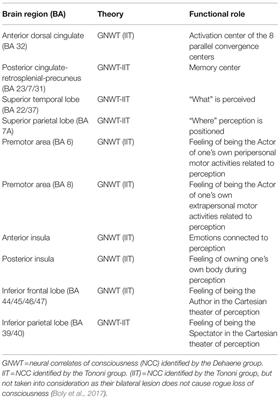The Neural Correlates of Access Consciousness and Phenomenal Consciousness Seem to Coincide and Would Correspond to a Memory Center, an Activation Center and Eight Parallel Convergence Centers
An increasing number of authors suggest that the neural correlates of consciousness (NCC) have no selective, executive, or metacognitive function.

It is believed that attention unconsciously selects the contents that will become conscious. Consciousness would have only the fundamental function of transforming the selected contents into a format easily used by high-level processors, such as working memory, language, or autobiographical memory. According to Dehaene, the neural correlates (NC) of access consciousness (AC; cognitive consciousness) constitute a widespread network in the frontal, parietal, and temporal cortices. While Tononi localized the correlates of phenomenal consciousness (PC; subjective consciousness) to a posterior “hot zone” in the temporo-parietal cortex. A careful examination of the works of these two groups leads to the conclusion that the correlates of access and PC coincide.
The two consciousnesses are therefore two faces of the same single consciousness with both its cognitive and subjective contents. A review of the literature of the pathology called “neglect” confirms that the common correlates include 10: a memory center, an activation center, and eight parallel centers. From study of the “imagery” it can be deduced that these eight parallel centers would operate as points of convergence in the third person linking the respective eight sensory-motor-emotional areas activated by external perceptions and the corresponding memories of these perceptions deposited in the memory center.
The first four centers of convergence appear in the most evolved fish and gradually reach eight in humans.
Read the full article at the original website
References:
